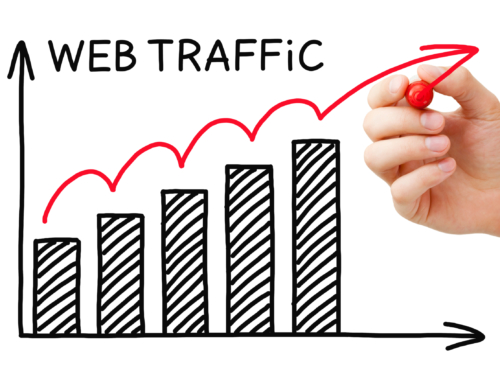The Internet is officially putting a lid on the cookie jar.
Earlier this year, Google announced that Chrome would no longer support third-party cookies, following in the path of Safari, Firefox, and other major web browsers that have abandoned third-party data collection in recent years. The paradigm shift towards privacy-first data collection marks a new era in digital marketing, one where companies will rely less on cookies to identify their customers and rely more on traditional, organic methods of audience targeting.
Even if your small business doesn’t utilize third-party cookie tracking, now is the time to begin looking ahead and integrating cookieless marketing practices that align with the changes happening to our digital ecosystem.
Read on to discover more about cookieless marketing and what it could mean for your business ‒ and contact NEXT! Ad Agency today to start preparing for a future where first-party cookies are available for the picking, and third-party cookies are crumbling!
What Are Cookies?
“We use cookies to make your experience on our website better” is a common greeting you’ve likely seen on websites. But what does it really mean?
If you’re not familiar, a cookie is a snippet of text that a platform or domain can place on a user’s browser, which then stores their login details, browsing behavior, and other information about their session on a site.
Think of cookies as identifiers. And while they do collect valuable types of information to help website owners better understand their audience. Cookies can also be used to profile, identify, and advertise to specific customers ‒ and herein lies a crucial difference that will become more apparent in the coming months.
What is the Difference between First-Party & Third-Party Cookies?
First-party cookies are created and stored by a domain, allowing the website owner to collect and analyze data on user sessions. Third-party cookies are created and placed by other domains, allowing those networks to track and target users.
Let’s say you’re visiting a clothing company’s website. The website places a first-party cookie on your device, allowing the domain owner to analyze your session and configure which pages you browsed the longest or which items you put in your online shopping cart. All website domains do this.
But if that clothing company works in conjunction with an ad network, they can also place and store a third-party cookie on your device. The ad network then uses this cookie to identify you as a prospective customer and uses your data to pinpoint your interests and measure the likelihood of your purchase.
Like any online consumer, you close your browser and move on to a new website. Because of this third-party cookie from the previous site, you begin to see advertisements for that clothing company on other websites and social media pages you visit.
Why is the Elimination of Third-Party Cookies a Big Deal?
For consumers, the seismic shift towards privacy-first is a positive development that raises the bar on security, ethics, and trust in our digital ecosystem.
For digital advertisers or e-commerce companies, it’s an entirely different story. Ad retargeting and remarketing through third-party cookies has been commonplace for years. Now that major web browsers are eliminating third-party cookies altogether, digital advertisers will no longer be able to target consumers the way they once did.
Cookieless Marketing Practices
First-party cookies aren’t going away — which is good news because personalizing and enhancing user experience will still remain a high priority for websites that want to rank and perform well on search engines.
With all that said, cookieless marketing really means less reliance on third-party cookies and more emphasis on holistic digital marketing practices. Next, we’ll explore some of the cookieless digital marketing practices that will hold the most weight when third-party cookies finally go away.
Embrace First-Party Analytics
Building first-party relationships with your audience will truly become the nature of the game, which is where the tried and true practice of analytics will come into play.
With the insight of first-party data, you’ll still be able to gain a singular view of every user who browses your website and piece together a bigger picture of your audience as a whole.
While you won’t be able to retarget specific consumers, advertising analytics of first-party data can help you understand the demographics of your audience, their interests, and create a profile of your ideal customer.
Encourage User Registration
In essence, websites will have to ask users to register to their sites once third-party cookies go away. Luckily, there are clever ways to get users to subscribe, converting browsing sessions into potential leads!
First and foremost, make sure your website is user-friendly and integrates obvious call-to-actions throughout your pages. These should stand out, differentiating from the font and colors of the rest of your content.
Create simple, short, and sweet sign-up forms. Limit your form fields to an email. Pop-up forms are the most convenient for the user.
Remember: Users don’t want to spend time filling out a form. They want to browse through a website and find what they need. Guarantee you won’t sell or share their email address with other companies.
Give your audience incentive to subscribe. Ultimately, what are they getting out of registering to your site? It could be a monthly newsletter, a free ebook, or a deal on a new product or service exclusively for subscribers.
Create More Content
The longer a user stays on your website, the more first-party data you can gather ‒ and both informational and transactional content not only keep users engaged but allow you to build relationships with your audience.
Transactional content reinforces your brand by highlighting your products and services. These can include event promotions, customer testimonials, and brochures. Users engaging with this type of content are ready to take action, make a phone call, sign up, or buy something.
Informational content also converts, but it must be relevant to the user. This user is primarily looking for information. If the content is engaging and helpful, it creates a better impression, making it more likely for the user to reach out to the business. Know which search keywords you need to target and drive relevant action. Ask yourself: “What is the intent of searching for this particular keyword?”
Bottom line: Websites with more content rank and perform better on search engines. With the elimination of third-party cookies, content will become all the more valuable for gathering information about web users and converting traffic into leads.
Prepare Your Website for the Crumble of the Third-Party Cookie
The shift towards a cookieless, privacy-first digital landscape will create both new challenges and opportunities for businesses to grow.
Third-party cookies are surely going away, and whether or not your website relies on them, now is the time to solidify your presence, build relationships, and get your cookieless marketing right and ready for the future ‒ and NEXT! Ad Agency is here to help. If you’re ready to get started, contact us today!






